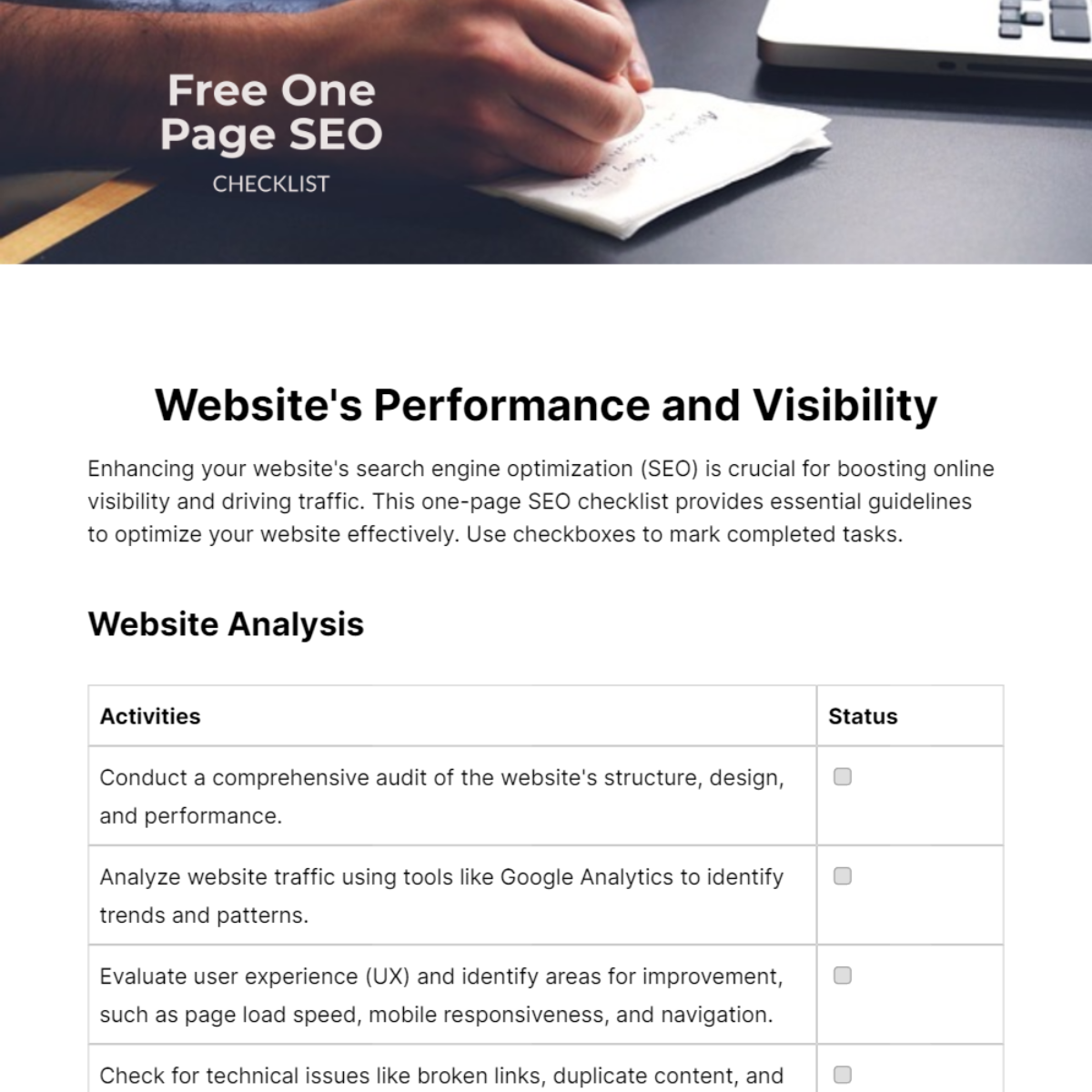SEO Checklist for Website Optimization
Prepared by: [Your Name]
Search Engine Optimization (SEO) is crucial for improving a website's visibility and attracting organic traffic from search engines. By following this basic SEO checklist, you can enhance your website's visibility, attract more organic traffic, and improve overall user experience and engagement.
Keyword Research:
Identify relevant keywords related to your content, products, or services.
Utilize tools like Google Keyword Planner, SEMrush, or Moz Keyword Explorer to discover popular and low-competition keywords.
On-Page Optimization:
Optimize title tags, meta descriptions, and headers with target keywords.
Ensure URLs are concise and descriptive, and include keywords where applicable.
Use descriptive alt text for images to improve accessibility and keyword relevance.
Quality Content:
Create high-quality, engaging content that addresses user intent.
Incorporate target keywords naturally within the content.
Regularly update and refresh content to maintain relevance and accuracy.
Mobile-Friendliness:
Ensure your website is responsive and optimized for mobile devices.
Test your website's mobile-friendliness using Google's Mobile-Friendly Test.
Page Speed:
Optimize page loading speed for better user experience and search engine ranking.
Use tools like Google PageSpeed Insights or GTmetrix to analyze and improve page speed.
Internal Linking:
Include internal links within your content to connect related pages and improve navigation.
Anchor text should be descriptive and relevant to the linked page.
External Linking:
Link to authoritative and relevant external sources to provide additional value to users.
Ensure external links open in a new tab to keep users on your site.
Social Media Integration:
Share content on social media platforms to increase visibility and engagement.
Encourage social sharing by adding social sharing buttons to your content.
HTTPS Security:
Secure your website with HTTPS to protect user data and improve trustworthiness.
Obtain an SSL certificate from a trusted certificate authority.
Regular Monitoring and Optimization:
Monitor website performance using tools like Google Analytics and Google Search Console.
Continuously optimize and refine your SEO strategy based on performance metrics and changes in search engine algorithms.

















































